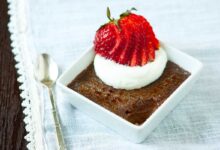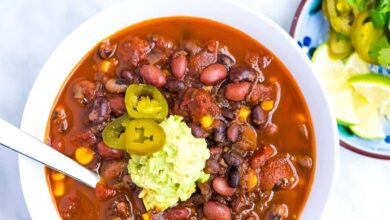Use our roasted turkey recipe for turkey with amazing flavor, soft and tender meat, and crispy skin. We highly recommend it to anyone preparing a turkey, especially for Thanksgiving!
Watch the Video

Related: For smaller gatherings, use our recipe for herb roasted turkey breast.
Thanksgiving Turkey Timeline
If you are like us, you don’t roast many turkeys throughout the year. Most of us really only roast them around the holiday season.
Here’s our timeline for thawing, brining, and roasting a turkey. I will use Thursday as our goal since that’s how Thanksgiving falls in the US, but you can move the days around to fit your intended roasting day.
This timeline assumes a thawed turkey. I’ve shared our tips for thawing turkey below.
- Monday: Brine the turkey — yep, we brine turkey and love it (highly recommended for flavor and texture!)
- Wednesday night: Remove turkey from brine, and air-dry in the refrigerator overnight (for best crispy skin)
- Thursday: Roast the turkey, allowing approximately 14 minutes per pound, in an oven preheated to 325°F (162° C). See below for the best roasted turkey we made in a long time.
How to Thaw a Whole Turkey
To safely thaw a turkey, do it in the refrigerator. Plan on 24 hours in the fridge for every four to five pounds of turkey. A 15-pound turkey will take three to four days to thaw. So, for a 15-pound turkey, you would begin thawing the Thursday before Thanksgiving.
To speed up thawing, you can thaw it in cold water — allow 30 minutes of thawing per pound of turkey. Change the cold water every 30 minutes, and if your turkey is not completely covered, rotate it every 30 minutes to keep it chilled. A well-insulated cooler is helpful for this.
Use This Garlic Herb Butter for the Best Turkey
We don’t roast turkey very often, but when we do, we go all in and use homemade turkey butter made with lots of butter, garlic, and herbs. For outrageous flavor, color, and moisture, we tuck the butter underneath the skin and brush it all over the outside. It’s a lot of butter, but let me tell you, it’s worth it!

⭐️ The best way to add moisture and that crave-worthy juicy factor to turkey is fat. Everyone is looking for juicy turkey, but here’s the deal: turkey is lean. That’s why we highly recommend using lots of our herb butter. Most of the year, you’re not going to see me stuff this much butter into anything, but I make an exception for turkey, especially Thanksgiving turkey.
Let’s Talk About Basting
We baste our turkey while it roasts and think you should, too. Basting fat over the turkey skin keeps it moist and flavorful. Now, notice I said basting fat — that’s the important part. Spooning broth over the skin doesn’t do much.
What helps is to use a turkey baster — the tube with a bulb on top — and gather the layer of fat sitting on the top of the broth in the bottom of the roasting pan. That fat will do wonders for the turkey skin. I baste my turkey every 30 minutes or so.

How Long to Cook Turkey
For our roasted turkey recipe below, we recommend cooking turkey in an oven preheated to 325°F (162° C). The cooking time depends on how large your turkey is and your oven.
⭐️ Approximate turkey cooking time: Roast whole turkey for approximately 14 minutes per pound. So, going with our theme of a 15-pound turkey, you will roast for 3 ½ hours.
How to Tell When Turkey is Done
The most reliable way to tell if a turkey is done is to use a food thermometer. Take the temperature in several spots, particularly in the thickest section of the thigh, making sure to avoid the bone. It’s a good idea to check both sides of the turkey.
⭐️ We take our turkey out of the oven when the internal temperature reaches 160°F (71°C). Note that the USDA recommends 165°F, but in our experience, carry-over cooking will bring the temperature up even more.
As a visual cue, you want to roast turkey until the juices run clear from the thigh after piercing it with a knife.
Once the turkey is out of the oven, allow it to rest for at least 30 minutes and up to an hour. If you lightly cover it with foil, it will still be hot when you carve it. If you need to keep the turkey warm for over an hour, place the roasted turkey in an oven set to 200°F (93°C). Cover the cooked turkey with foil to prevent it from drying out.

More Tips and Tricks
Trussing a Turkey: We truss our turkey before roasting—position twine around the bird, tucking it slightly underneath the neck end. Bring the twine up and around the wings, pushing them towards the breast. Cross the twine at the cavity, forming an X, and then tie the ends of the drumsticks together.

Brining a turkey: We brine our turkey and highly recommend it. Don’t think of brining as a way to keep your turkey moist and juicy. Instead, brining is for FLAVOR and texture. Brined turkey is more flavorful and tender. We wrote a helpful article with photos and a video showing how we do it.

Stuffing a turkey: We do not stuff turkey or recommend it. It’s an excellent way to overcook your turkey since the stuffing will often take longer to come to temperature than the turkey itself. Keep stuffing on the side.
Popular Thanksgiving Side Dishes
Desserts!

Our Best Roast Turkey
-
PREP
-
COOK
-
TOTAL
Use our oven roasted turkey recipe for turkey with amazing flavor, soft and tender meat, and crispy skin. We highly recommend it to anyone preparing a turkey for Thanksgiving! We brine and air-dry our turkey; here’s our turkey brine recipe to see how we do it. You can make an excellent gravy using the pan drippings; here’s our turkey gravy recipe (coming soon!).
14 servings (assuming 15-pound turkey)
Watch Us Make the Recipe
You Will Need
Roast Turkey
1 (12 to 20 pound) turkey, brined (recommended) and trussed
Turkey butter, recipe below
1 large onion, cut into eight wedges
2 carrots, roughly chopped
2 celery stalks, roughly chopped
5 cloves garlic, smashed
8 fresh thyme sprigs
4 sage leaves
2 quarts (8 cups or 1.8L) chicken stock
Herb Turkey Butter
1 pound (460 grams) salted butter, softened
1 teaspoon fine sea salt
1 tablespoon (5 grams) coarse ground pepper
1 teaspoon Worcestershire sauce or Pickapepper sauce
3 cloves garlic, smashed
1 lemon, zested and juiced
1/2 cup (14 grams) parsley leaves
1/4 cup (7 grams) sage leaves
2 tablespoons (5 grams) fresh thyme leaves
Directions
- Prepare Turkey
1Preheat the oven to 325° Fahrenheit (162° C) and adjust the oven racks so that the turkey will fit.
2Place the onion, carrot, celery, garlic cloves, thyme sprigs, sage leaves, and chicken stock in the bottom of the roasting pan. Set a roasting rack into the pan, suspended above the ingredients.
3Add a quarter of the turkey butter to a small saucepan over low heat. Melt the butter, and then remove from the heat. Set aside.
4Place the turkey on the roasting rack. Use your hands to create a pocket between the skin and breast meat. Use a knife or scissors to make a hole where the drums meet the thighs.
5Rub the remaining turkey butter into the pockets under the skin and the holes near the thighs. Massage the butter to create an even layer underneath the skin — this is a messy job, but well worth it for impact flavor! I use almost all of the butter. Depending on how large your turkey is, you may only need some of it. Alternatively, if you have a disposable piping bag, pipe the butter under the skin and into the holes in the legs, then massage the butter around.
6Flip the turkey over so that it is breast-side-down on the roasting rack. Brush some of the melted turkey butter all over the back of the turkey. Flip the turkey back so that the breast side faces up, and then brush the remaining melted butter all over the top (all this butter will make the turkey incredible). Lightly season with salt and pepper.
- Cook the Turkey
1Roast the turkey for approximately 14 minutes per pound, checking and basting with the fat on top of the broth in the pan every half hour. If the liquid level drops too low in the pan, add some water to replace it. I rotate the pan every hour for even browning. For a 15-pound turkey, it will take 3 ½ hours.
2When the turkey is about two shades lighter than you want in color, tent it with foil and roast until an internal thermometer inserted into a few areas (breast and thighs) reads 160° Fahrenheit (71° C). Check both sides of the thickest part of the thigh, away from the bone. As a visual cue, you want to roast turkey until the juices run clear from the thigh after piercing it with a knife.
3Remove the turkey from the oven and let it rest for 30 minutes to 1 hour before carving. To keep warm after resting, place into an oven set to 200°F (93°C). To prevent it from drying out, loosely cover it with foil.
Adam and Joanne’s Tips
- Unsalted butter: When making the turkey butter, if you have unsalted butter instead of salted, add an additional teaspoon of fine sea salt to the butter mixture.
- Helpful equipment: Brine bag or 5-gallon bucket (optional if brining), large roasting pan with rack, disposable piping bag, food-grade nitrile gloves (for massaging the butter), basting/pastry brush, and turkey baster.
- Nutrition facts: The nutrition facts provided below are estimates. We have used the USDA database to calculate approximate values. Calories and fat are likely a bit off because much of the butter melts down to baste the bird and eventually ends up in the bottom of the pan.
Nutrition Per Serving
Serving Size
1/14 servings
/
Calories
539
/
Total Fat
21.7g
/
Saturated Fat
11g
/
Cholesterol
278.3mg
/
Sodium
709.8mg
/
Carbohydrate
2.9g
/
Dietary Fiber
0.6g
/
Total Sugars
0.8g
/
Protein
81.3g










